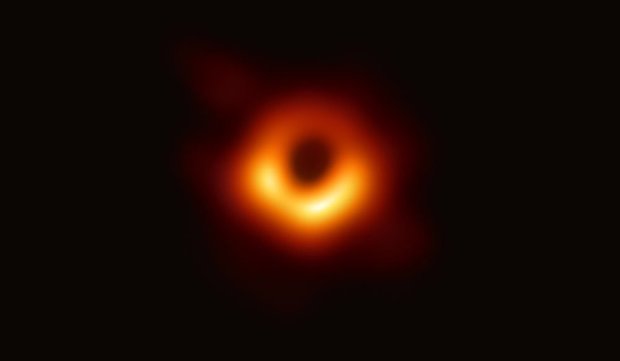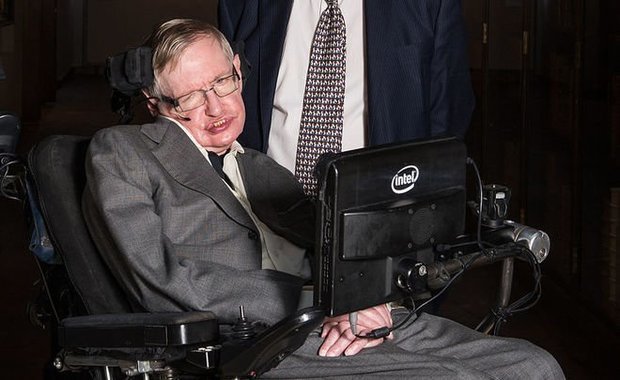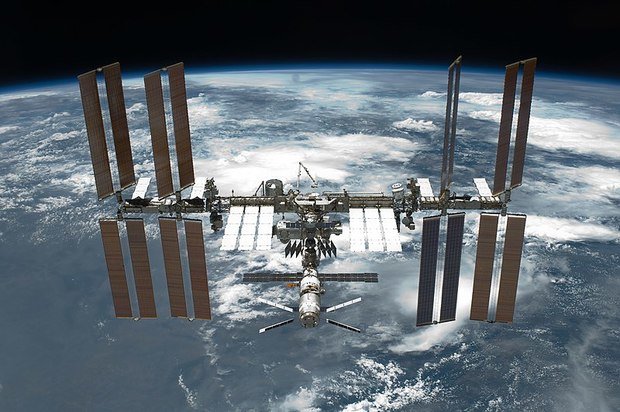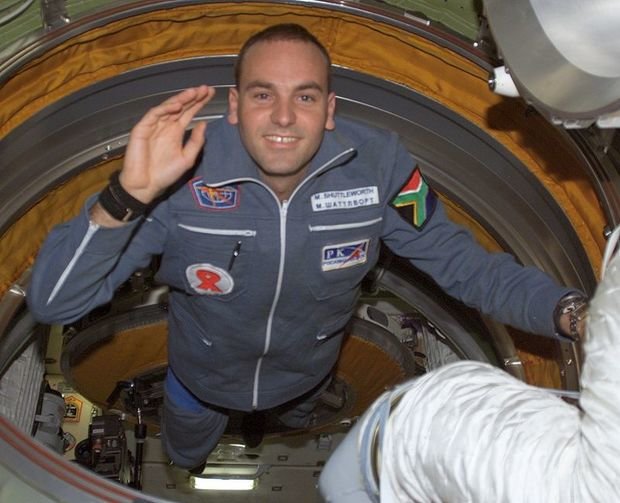''It’s not very clear at the moment what to do with this discovery further''
Astronomy populariser Igor Tirsky on the black hole image and space hotels
''There is only one way of travelling inside the black hole to another Universe, it is when you got to the event horizon but haven't reached singularity yet. However, there is a lot of hypotheses, but at the moment we can neither prove nor deny any of them,'' astronomy and astronautics populariser, scientific editor of Amateur Astronomy book Igor Tirsky states. In an interview with Realnoe Vremya, he explained the benefit of the black hole image to earthlings, how contemporary physics bypasses the singularity problem and why space colonisation isn't a matter of near future.
''We can't see not only the event horizon but also even one and a half of its radius''
What's the gist the recent event when the first photos of the event horizon of a black hole were taken? May we call it a scientific discovery?
Let's start with giving some background. A group of scientists had been assembling a so-called ''virtual'' Event Horizon Telescope for several years. Why is it virtual? Because this project was based on existing millimetre-wave telescopes, that's to say, radio telescopes. They were created a long time ago and are located on different continents, including in Antarctica. Scientists agreed to unite these radio telescopes and managed to observe two black holes with the help of such a united aperture almost the size of Earth in the M87 galaxy of Sagittarius A* and at the heart of our Milky Way.
Why did they choose precisely these objects? Because, first of all, they are big. To be more precise, the hole in Milky Way is small but close to us, this is why it's easy to observe, and that in the M87 galaxy is very far from us, at a distance of approximately 50 million light years but it's huge – billions of kilometres in diameter. From this distance, it's almost the size of the hole in the Milky Way. In addition, neither dust we have in the galaxy nor additional stars impede from observing this object.
Moreover, they managed to observe the area the black hole is located in and the so-called shadow of a black hole, or the silhouette of the event horizon. The latter is 2,5 times smaller than this silhouette. And that bright ring resembling sunflower is the so-called ring of fire. It's the accretion disc of the substance – gas and dust that rotate around the black hole at a high speed. The dust rubs against itself and therefore gets hotter, this is why there is great radiation – this is what was registered.

''The most important thing is that scientists have seen the neighbourhood of the black hole for the first time and detected how gas moves around it. It is very important because there isn't a smooth theory of this movement.'' Photo: ivbg.ru
To be more precise, everything ''above'' the so-called photon sphere was detected. What is a photon sphere? When a photon, a massless particle, flies in space, it also experiences the curvature in space-time depending on the location of some masses nearby. A black hole has a huge mass with a small volume – it's so small that curves space and time infinitely. Photon can rotate around it in stable orbits. And it turns out that if it rotates around, we don't see it because to reach us it must get out of this orbit (this can happen if photon flies out the hole radially and at quite a high speed), then we will detect it.
And what we see is what rotates a bit further than this stable photon orbit. We don't see the rest at all because photons don't almost get out of there. We can't see not only the event horizon but also even one and a half of its radius.
Does it mean that the hole is actually smaller than we ''see''?
Yes, it's 2,5 times smaller than this black spot that was photographed or, more precisely, they got processing the image obtained from a radio signal.
So we see a silhouette of the photon sphere and everything located further. And scientists are saying it's really a discovery. Firstly, it helped to understand that the general relativity theory works, that it can predict. However, nobody had doubted it in general because it had already been confirmed many times. Scientists, on the contrary, look for an experiment or observation that would deny the general relativity theory.
But the most important thing is that scientists have seen the neighbourhood of the black hole for the first time and detected how gas moves around it. It is very important because there isn't a smooth theory of this movement. It's turbulent, that's to say, we can't describe it analytically, we can't predict how gas will behave at every next moment. Thanks to the obtained information, we can do this more accurately.

''Yes, as far I am concerned, Hawking had such views. But there are quite many hypotheses suggesting that, for instance, black holes become white, once getting into the black hole you will leave it through a white hole.'' Photo: John Cairns / wikimedia.org
''There is only one way of travelling inside the black hole to another Universe''
How can this discovery come in handy on Earth?
It's hard to say at the moment. But we have, for instance, such science as magnetohydrodynamics. There are even magnetohydrodynamic power plants where plasma moves on a strong magnetic field generating electricity – it's the action resembling what happens around objects like a black hole or in the accretion disc. This knowledge will probably be used in the future to improve such power plants.
In addition, the data will be analysed for several years. This is why it isn't very clear at the moment what will happen to this discovery further and how deep it is. And we need to wait for a photo of a black hole from the Milky Way. This data is processed now, there is a big number of them, several petabytes. We will see the second photo probably in six months or even this summer. It will be similar to the first one but its size will be 2,5 times bigger. There is a model that suggests how it will probably look. We still should wait because a black hole in the M87 galaxy is different from ''ours'', it's active, gas penetrates in it, the accretion disc is formed around it and there are jets – relativistic plasma emission.
Stephen Hawking considered that a black hole was a kind of portal to the alternative Universe, right? What are the new hypotheses explaining its nature that are worthy of attention?
Yes, as far I am concerned, Hawking had such views. But there are quite many hypotheses suggesting that, for instance, black holes become white, once getting into the black hole you will leave it through a white hole. But it's unlikely because if you got into a black hole, you will likely reach the singularity, the point or, more precisely, the place where all laws and equations of physics break down and become infinite. In other words, roughly speaking, you will just disappear for our Universe. There is only one way of travelling inside the black hole to another Universe – it's when you got to the event horizon but haven't reached singularity yet – it's the moment when you can move to another Universe. However, there are many hypotheses, but at the moment we can neither prove nor deny them.
There is the main hypothesis that's able to describe what's happening inside the black hole – it's string theory suggesting the existence of additional dimensions. Neither has it been proved at the moment. But thanks to it we can understand how black holes work because it bypasses the singularity problem. In other words, it doesn't have those points where all equations become infinite and they can't be solved. But this all can't be even modelled – it's just theories that came to people's mind who want to get rid of the singularity problem.

''The ISS now weighs 450 tonnes, while Musk's project will allow delivering almost 150 tonnes at a time. Consequently, it will take just 10-20 flights to build an orbital city.'' Photo: spaceflight.nasa.gov
''Hotels can be built in orbit''
If you don't mind, let's get off black holes. Could you say what impedes from building space cities?
To build something in space, we should find material for it. We can find it either on Earth or in space. At the moment, there is no technology that would allow finding material in space easily. At the same time, we need not only to find it but also melt it, we need to build an entire factory in space. And this is a matter of remote future – to build something in space, we need to deliver at least machine tools, instruments and so on there and decide where to locate it, either in orbit or on the Moon where it's easy to take off from.
There is an option of building this orbital city on a 3D printer, that's to say, it will print itself. But there is a problem here, too: we will have to refill the 3D printer. It might be lunar regolith, for instance, or another material spread in space. Of course, we will anyway have to find this material, that's to say, it will be necessary to build quite big rockets that will be able to take hundreds of tonnes of regolith or something else there. Or let's say we can build a base on the Moon, locate a factory, build elements of constructions for orbital stations and deliver them to the orbit from there because, as I already said, we can easily take off from there with a big mass and low fuel consumption (gravity on the Moon is six times less than on Earth).
Elon Musk or Jeff Bezos's project already allows hoping that we will have big spacecraft in 10-15 years that are able to deliver probably hundreds of tonnes at a time to the orbit even from Earth, probably from the Moon, too. This means the problem of delivery of heavy freight to the orbit will be solved, and we, therefore, will be able to deliver as much mass as there is today in the whole ISS within 3-5 flights. The ISS now weighs 450 tonnes, while Musk's project will allow delivering almost 150 tonnes at a time. Consequently, it will take just 10-20 flights to build a space city.
That's to say, the whole problem is to deliver freight to the space city and do it at a low cost. A reusable rocket is needed for this purpose. It's what SpaceX is doing now. The new Starship they are building will be fully reusable and replaceable.

''The only reason why an orbital city or even a big orbital station is interesting is that tourists can be sent there, moreover, in big numbers.'' Photo: wikipedia.org
Consequently, Russian lorries won't be needed, right?
No, of course. But there is a nuance here associated with docking stations and gateways. You won't be able to dock on, for instance, the ISS if you have another docking stations. And then we will have to deliver freight with the help of old spacecraft – Progress or even Dragon that can dock on the US segment of the ISS.
What's the utilitarian sense of existence of space cities?
It's probably early to start thinking about it when, for instance, your territories in the North, in Siberia or somewhere else aren't explored. The only reason why a space city or even a big orbital station is interesting is that tourists can be sent there, moreover, in big numbers. And if we have big spacecraft like that of Musk, for instance, which can host 100-150 people on board, the ticket price for such a flight will be about $100-500,000. A very big number of people can afford it. Even now you can probably afford to go into space once in a lifetime – it's the price of a flat in Moscow. Every person who has realty in a big city can go into space if he or she wants it very much. This is quite expensive for us, of course. But, for instance, for Americans, it's not anymore. And people will likely fly several times. This is why, indeed, a hotel or something like that can be built in orbit.
Of course, there is no need to send such a big number of people for scientific research, 3-5 people will be enough. But only if we don't want to colonise the Moon or Mars. Because if we want to do it, we will need to have some transhipment bases or centres in Earth's orbit where those who service the Moon or Mars could live. There is no protection from radiation in other bodies of the Solar System anyway, we can't live there all the time, while it exists in orbit. An advantage of a space city, in this case, is that we won't have to land on the planet and take off from it spending a huge amount of energy each time.